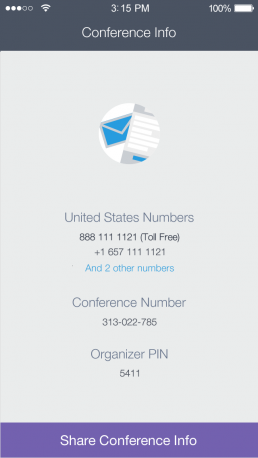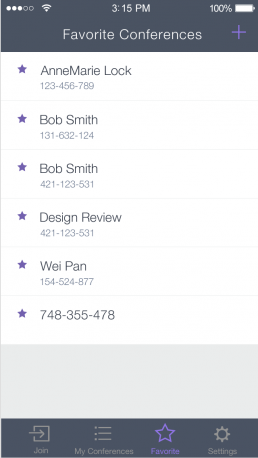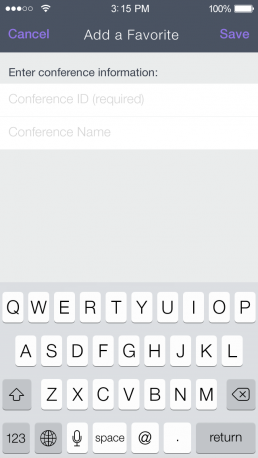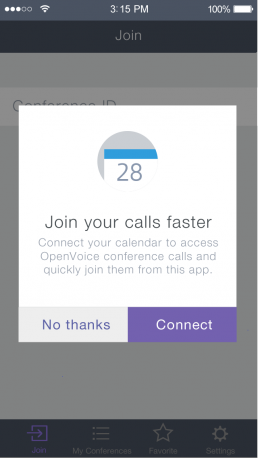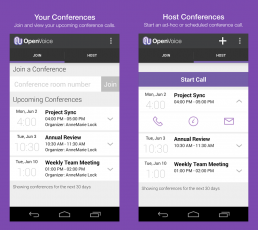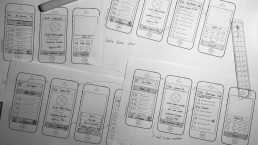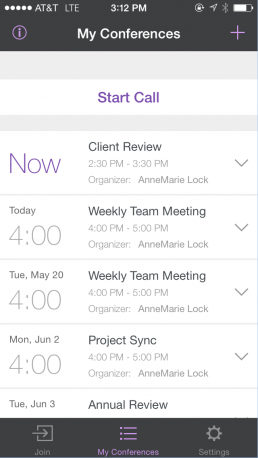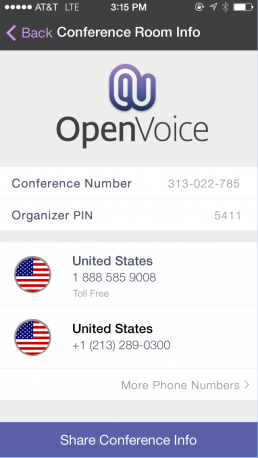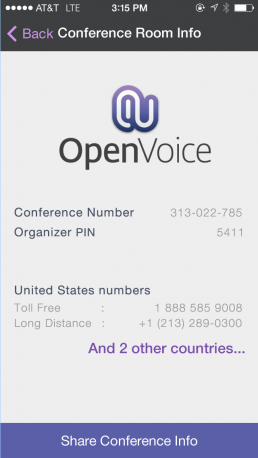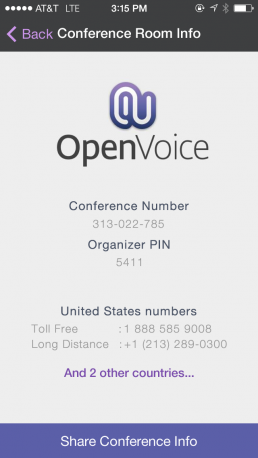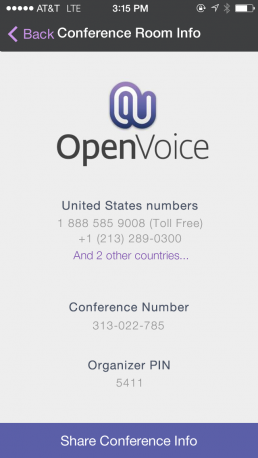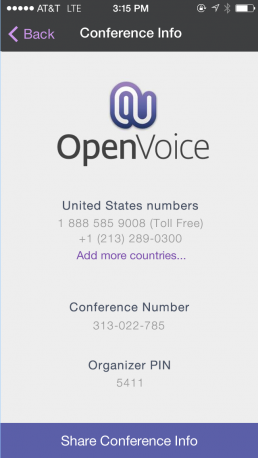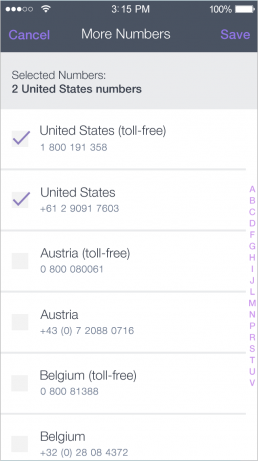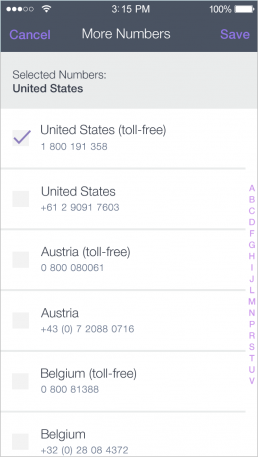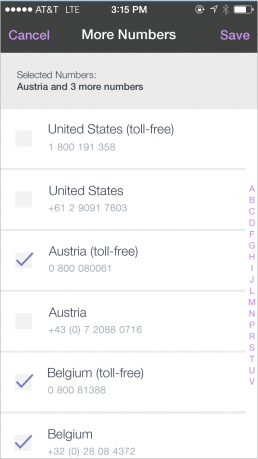About This Project
The project here is one of many features that I designed for OpenVoice when I worked at Citrix as a product design intern from Sep. 2014 to Mar. 2015. The goal is to bring several long-needed features to OpenVoice users on both iOS and Android platforms. The example here is just for Android. However, I’d be happy to send you iOS designs if you wanna see more.
My Role
I designed the whole interaction, workflow and visual designs as a product design intern. I also collaborated closely with product manager, developers, and UX writer. The work was mentored by AnneMarie, a senior product designer.
What is OpenVoice
OpenVoice is an audio conferencing tool from Citrix. It allows users to quickly start and join audio conferencing calls from a mobile app, saves them from hassling with access codes or memorizing conference room numbers. With OpenVoice, users can also organize and schedule meetings all in one place. Its service includes both toll-free and long-distance calling options via numbers in 57 countries. During 2014, it has delivered 10 billion minutes of audio conference.
The issue
Lacking curated experience for OpenVoice users.
As a stand-alone product, OpenVoice mobile app was built based on GoToMeeting mobile app at the very first beginning. Therefore it shared a lot of design and IA from GoToMeeting. The experience is not curated uniquely for audio conferencing.
Top Wanted Features From OpenVoice Customers
Before I joined, the research team has sent mobile-centric survey to customers who have signed into the mobile app at least once. Main goal was to get feedback on mobile feature prioritization. Secondary goal was to identify mobile users to recruit for ongoing qualitative customer interviews. Those became the roadmap for us. Our job is to launch those features as MVP asap.
As an organizer, I would like to be able to share conference room and dial-in info via text or other apps.
User Story: Share Conference Information
The project
Share Conference Room Info
Before this enhancement, there is no way for a user to share the conference room and dial-in info in the app. And when they share via email, they generally need to delete many numbers from a list that has more than 50+ toll-free numbers, and 25+ long-distance numbers, in order to keep only the numbers they want people to dial in with. To prevent straining users with that physical and cognitive load, the enhancement put user’s locale numbers as default two for share, with the ability to opt in more other numbers if they want.
The Challenge
Simple Yet Flexible Design
There are 57 toll-free dial-in numbers and 28 long-distance numbers in total. The questions are:
- How can we make the design easily understandable yet provide users with the flexibility in including the numbers they want?
- How do users share the conference information generally?
- Do they just share several numbers or do they share all?
- Is there any preference when choosing the numbers?
The Findings about how they share the conference info.
- Our research into OpenVoice customers informed the detailed experience of how they share the conference info.
- Most people will include only their locale numbers and the conference room ID in the email when they send the invitations.
- The subject is very simple, containing only very brief info regarding the conference.
- Looking into the invitation emails OpenVoice sends out found the email are very long as it includes all the dial-in numbers, and the numbers are not prioritized.
The Ideations
Info Screen
Using insights from the understanding phase, a brainstorming was done to generate as many ideas about the information screen as possible. The overall goal is to make the sharing easy, quick, and flexible. It should be clear to see the conference info and what’s the dial-in numbers included. To the receivers, it should be easily understandable about where the invitation from and how to join the call with the information provided.
We decided not to show all the number selected on the conference information detail page, because it is intended to share with the attendees, therefore to the host – people who sharing the information – it is not necessary information to them. However, giving them ideas how many country numbers will be sent out is helpful. I used a link instead of a button to navigate users to the More Numbers page is because buttons should be reserved for “doing something”, as opposed to navigation. The link also serves as a subtitle reflects user’s selection in our cases.
Explore The Share Workflow
Having decided what the information screen looks like, I took the first stab to explore different ways of how the share workflow works overall. Here are some options:
- No Preferred Number: Ability to share more numbers; Local country numbers are on the list.
- No Preferred Number – default number not included on the list: Ability to share more numbers; Local country numbers are excluded from the list.
- Extra Share Step: Always need to go through the phone list before share.
- Share Inside of Modal: The ability to share directly with different sharing options; Ability to edit numbers before share.
- No Choice Version: Only the local country numbers are shareable; Can’t share additional numbers.
- Preferred Number: The ability to surface preferred numbers; The ability to add additional numbers before sharing.
- Customize: The same workflow as idea 4, but using default contextual menu component.
- All or Nothing!: Allowing to share either local numbers or the whole list; No other options.
Although many of these concepts were not optimal or even makes no sense at the time, they gave me the freedom to generate as many ideas as possible without limiting.
The Finalist
1 - No Preferred Number
Craft the Details
Edge cases showing when users make different selection combinations, the title, reflects their selections.
The Final Design
Other Features Designed
Default Dial-in Number
Set a default dial-in number to avoid always having to select which number before joining a call.
Released on Feb 11, 2015. 63% of conferences were joined via a default number on Android. The number of unique users that has used a preferred number is nearly identical at 61%. And the number of users that are using a preferred number is increasing.
Recent History
Allowing users to quickly join a recently joined meeting via the call history.
- Released on Android on Dec 04, 2014.
- Between Jan 10, 2015 to Mar 11, 2015, hundreds of call was made, 10.61% of them was made via recent history.
- The numbers of times that a conference is joined via Recent History has gradually increased since launched.





